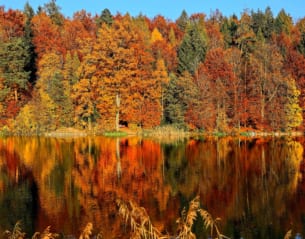Demonstration of offshore wind observation system using Spar Buoy with motion stabilizer has been completed.
Press Release
Press Release
~ Confirmation of Stable Long-Term Observations in the Severe Oceanic Environment off Sakata, Yamagata Prefecture ~
Japan Weather Association (hereinafter referred to as “JWA”) has completed a demonstration test of <BuoyLidar> offshore wind condition observation system using Spar Buoy with motion stabilizer.
A total of 18 months in offshore of Sakata, Yamagata Prefecture, demonstration tests showed that <BuoyLidar> can reduce about 85% of the cost, compared to observations using offshore observation masts. We also confirmed that the acquisition rate of observation data at an altitude of 100m, which is important for offshore wind power generation, is 96.1%, enabling stable observation over a long period of time.
BuoyLidar is a floating offshore wind observation system equipped a “Doppler Lidar” (hereinafter referred to as the “lidar”) that captures reflected waves of laser light and measures winds in the sky, with “Spar Buoy with motion stabilizer” that suppresses shaking caused by ocean waves. This technology development that combines a lidar with Spar Buoy with motion stabilizer, which equipped with an attitude stabilizer (submerged fin) to a spar buoy is the world’s first experiment. (as of September 1st 2020, investigated by JWA).
BuoyLidar enables direct observation of offshore wind conditions in a low-cost and short period, it also can be used for business developments (preliminary surveys, designs, construction, and maintenance) of offshore wind farms.
BuoyLidar was developed under a project commissioned by the Ministry of the Environment to develop and demonstrate technologies related to offshore wind observation systems and estimates (Low Carbon Technology Research, Development and Demonstration Program) from fiscal 2016 to fiscal 2020.
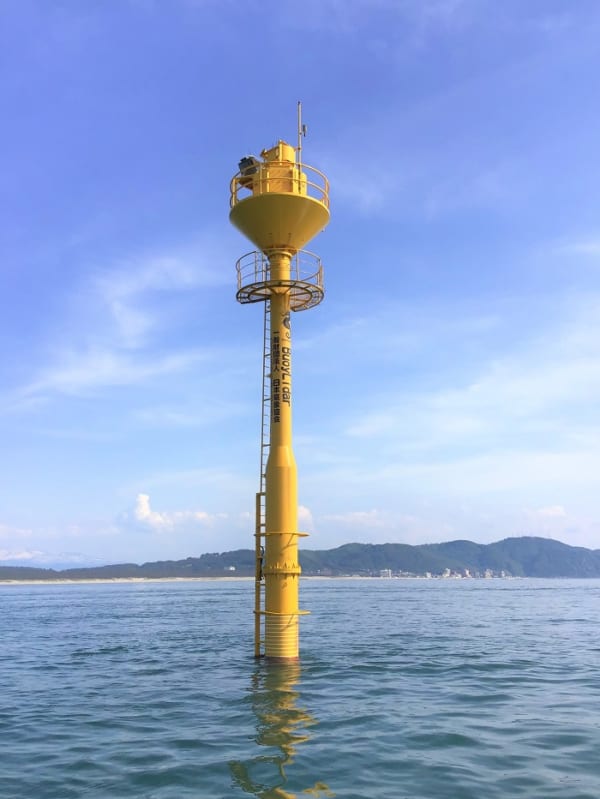
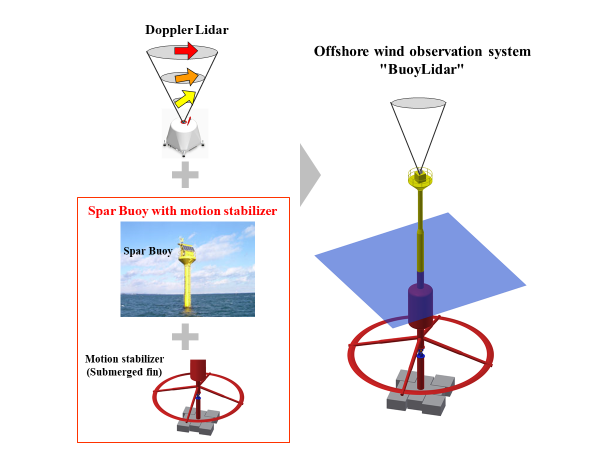
1. Characteristics of BuoyLidar
- Direct observation of offshore wind conditions using the world’s first technology equipped with a lidar on Spar Buoy with motion stabilizer.
- Compact design realizes cost reduction and shortening of construction period.
- Specifications for severe marine environment such as countermeasures against salt damage and rainfall.
- Ensure stable power supply from fuel cells. Continuous operation record for five months without refueling.
- Tension Leg Platform (TLP) enables BuoyLidar to fix at the installation point, it can reduce the burden on fishery personnel.
- The lidar is equipped with a motion stabilizer to eliminate the effects of ocean waves.
- Expectations for turbulence measurement on the ocean. (We plan to apply turbulence measurement technology for lidar observation on land in the future)
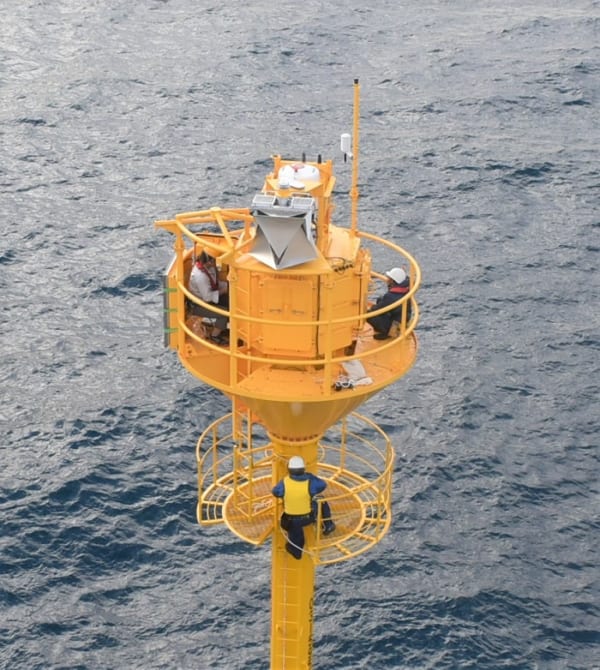
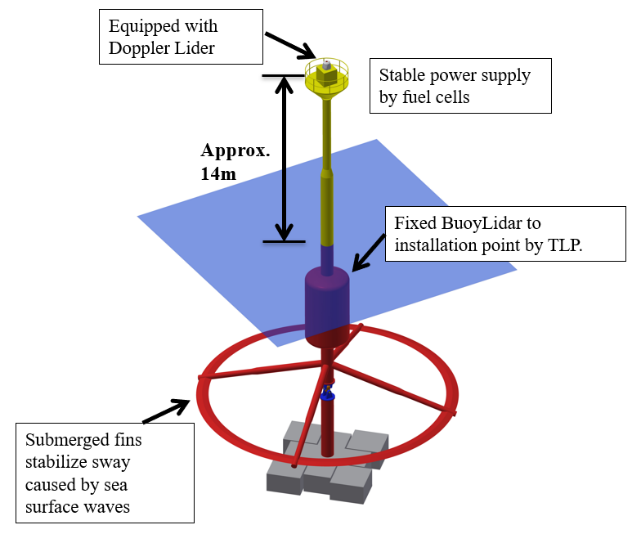
2. Contents of the demonstration experiments and the acquisition rate of observation data
In order to demonstrate the effectiveness of the developed BuoyLidar, we conducted demonstration tests in the offshore area of Sakata, Yamagata. Through 18 months of demonstration experiments, we confirmed that wind conditions could be observed normally even in severe oceanic environments, such as strong seasonal winds in winter and high waves and strong winds associated with typhoons in summer. The observation data acquisition rate was as good as 96.1% at an altitude of 100m assuming the hub height of offshore wind turbines.
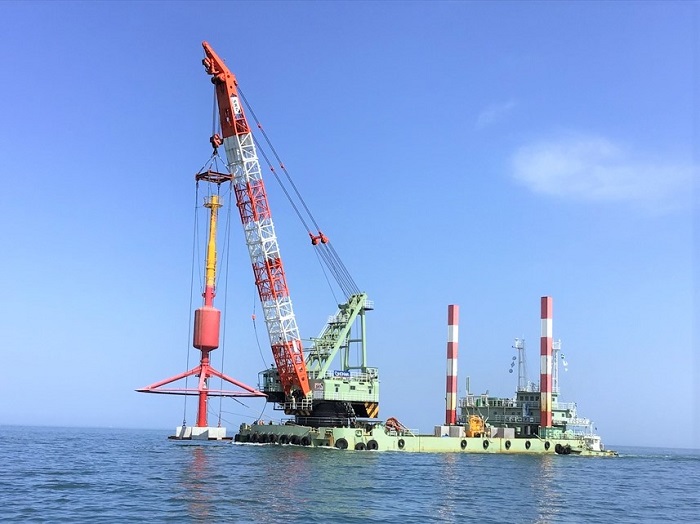
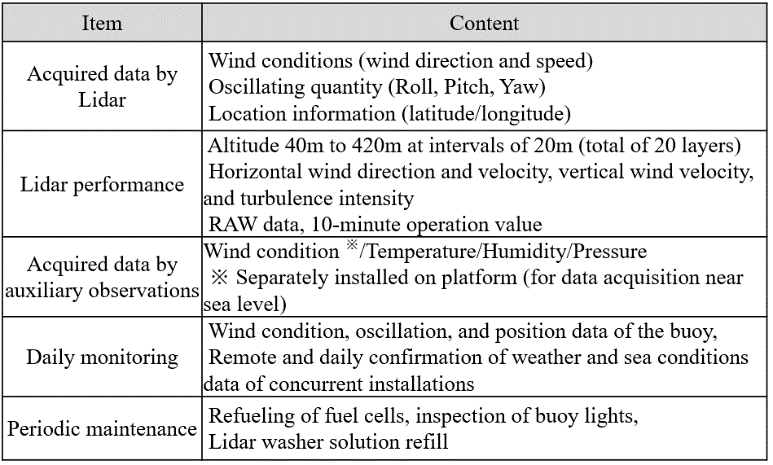
3. Background of BuoyLidar development
Observation of offshore wind conditions had hardly been carried out so far, and only some of the research and development projects have seen cases of observation using steel masts constructed offshore. Cost and construction period became a great burden for constructing observation steel masts on the ocean, and it was not realistic for the business entities to develop offshore wind power generators business.
For this reason, offshore wind observation using a floating lidar has become a focus of attention as an alternative to observation masts. Offshore wind condition observation systems using floating lidars have already been developed in Europe, where offshore wind power generation is increasingly being introduced. However, whether the floating lidar in Europe can be applied to the severe marine environment in Japan as it is, its safety and observation accuracy have not been sufficiently confirmed.
JWA has developed a secure, high-accuracy offshore wind monitoring system, “BuoyLidar,” which can be applied to a demanding Japanese environment through demonstration tests.
※ Related links (available only in Japanese):
2017.07.11 Japan Weather Association news release
Developed BuoyLidar, the world’s first offshore wind observation system using buoys with motion stabilizer:
Started demonstration experiments off Shonai, Yamagata Prefecture, to reduce costs by about one tenth compared to the previous model.
https://www.jwa.or.jp/news/2017/07/4490/
2016.09.13 Japan Weather Association news release
JWA has been adopted to the “Low Carbon Technology Research, Development and Demonstration Program in 2016”
~ Implemented “Technology Development and Demonstration Project for Observation System and Estimation of Offshore Wind Conditions”
https://www.jwa.or.jp/news/2016/09/4638/
Originally released in Japanese on 2020/9/15
PDF Download: Demonstration of -BuoyLidar- offshore wind observation system
